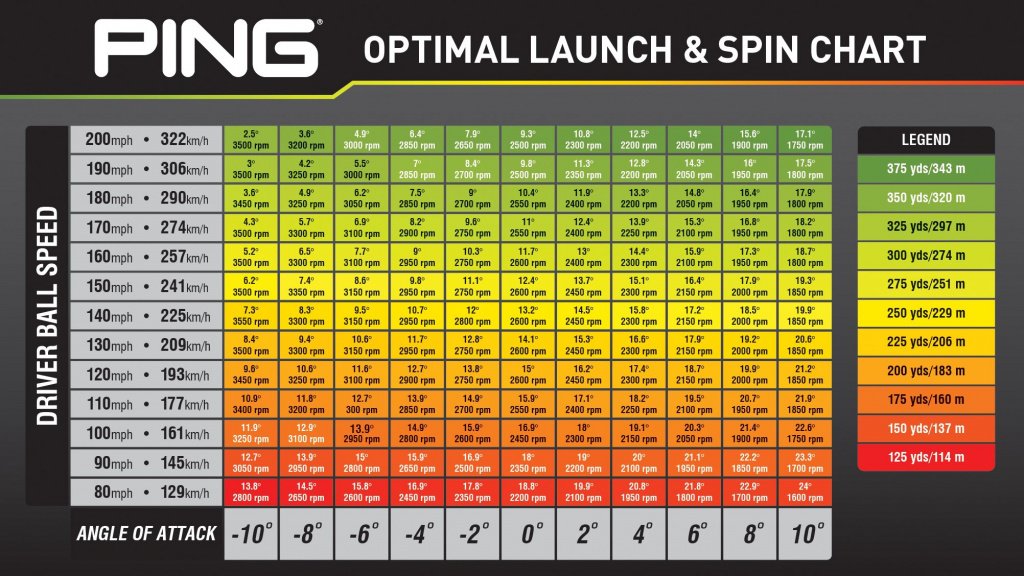In this week’s Blog, we will be looking at Drivers and what things we should consider when buying a Driver.
I would like to first start with a statement that might make a few golfers angry. Not one driver can go farther than another driver at the same speed and center hits. Now that I’ve got that off my chest let’s dive into how we can make some better decisions when purchasing or fine-tuning our Driver.
Just like with our previous article on choosing wedges and looking at spin production, I don’t think there’s another club or shot that sticks with us longer than a perfect drive, right down the middle. I’ve chatted with some golfers who would prefer to drive the ball well and score worse than actually score better with worse drives! Now if we polled a bunch of golfers the most typical answer when it comes to driving distance would be “about 250”. However, according to a recent study, the average female driving distance is about 147 yards and the male distance is just over 215 yards. Now, this is incorporating all ages however it is likely not far off for most.
So how do we hit our best drivers most often? When looking a the Driver the best way to look at this is sort of like a physics equation. We need the optimal combination of Launch and Spin for the given ball speed. Think of it this way. If you had a garden hose and wanted the water to spray out further, you would simply raise the trajectory and you could achieve a longer distance. Now obviously there will be a point at which the launch is too high and the overall distance will be shorter. At that point, we would need more water pressure (ball speed) to hit it further.
What factors into launch angle and spin?
Launch angle - this refers to the angle at which the ball leaves the club face in reference to the ground. The loft on the driver plays a major role in determining this angle however how we swing the Driver into impact will also have an impact. The angle of attack refers to the angle the club head is moving as it impacts the ball. The number can be positive (ascending), level, or negative (descending). Unless you are swinging well above 110mph and your main goal isn’t distance, you should be striving for a slightly positive (1-4*) attack angle.
Spin - this refers to the revolutions per minute (rpm) of backspin that is being produced on each shot. The term Spin loft (dynamic loft minus attack angle) will be the number most associated with how much spin is created. Other factors include golf ball construction and strike location. Rather than go down a rabbit hole on spin please refer to the chart below to find a great starting point for your potential distance numbers.
When choosing a new driver it can be daunting to see not only does every driver manufacturer claim they have the fastest driver on the market, they usually have 3 or more models in each Driver family. This year alone we have Ping g430 LST, G430 Max, G430 SFT, Callaway Paradym Triple Diamond, Paradym, Paradym X, Taylormade Stealth 2, Stealth 2 Plus, Stealth 2 HD, Titleist TSR 1, TSR 2, TSR 3 and TSR 4. That alone would cause a lot of confusion amongst golfers however most manufacturers have drivers that fall into 3 categories: A low spin slight fade bias Driver aimed at the better player with higher swing speeds, a standard model hoping to target a wide variety of players, and an anti-slice draw promoting model for those who struggle with a slice.
Low Spin Model (G430 LST, Stealth Plus, Paradym Triple Diamond, TSR 3/4)
This model is the one you will typically see most better players strive for. It will most likely be fade bias and it usually presents the best chance for a faster clubhead speed player to hit their furthest drivers. However low spin drivers typically suffer from lower Moment of inertia (MOI) and are typically less forgiving on mishits.
Standard Models (g430 max, stealth 2, TSR2, Paradym)
This model is where the majority of golfers will fall. these drivers other a visually slightly larger footprint and will give most a perfect blend of distance and accuracy
Draw Enhancing Models (G430 SFT, Stealth 2 HD, TSR1, Paradym X)
This model of the driver will look closer to the standard models of drivers than the Low spin however they will typically feature a slightly more closed-face angle and more weight in the heel of the club.
Now like with all things in golf, nothing is a hard fast rule. Draw-enhancing drivers won’t cure your slice, nor will a low-spin driver always give you low spin for that matter, that is a technique issue. Some players like myself actually have hit standard drivers with lower spin than low spin drivers. It really comes down to how each player delivers to the club and the consistency with which they do this. The harsh reality also comes when we are unhappy with our total distance and our launching conditions are ideal. At this point, the only way to increase distance is to produce more club head speed. We will tackle that phenomenon at a later date.
Like with the wedge test, I was curious to see what difference the driver models would produce. I tried my best to replicate the same club head speed (95mph) and angle of attack (2*up). I used 10.5* models of the paradym Triple diamond, paradym, and paradym X. The results are as below
Triple Diamond Paradym Paradym X
Launch Angle 11.0* 12.1* 13.1*
Spin (RPMs) 2062 2226 2337
Carry (yards) 222.3 229.3 234.3
Total (yards) 259.7 261.5 263.1
As you can see, each driver produced nearly the same total distance however how they got there was a different story. At 95mph clubhead speed a higher launch with a little more spin produced the best carry number. If I did the same test at a higher swing speed I would like to think that the low spin model may serve me better and the higher launching driver would be the shortest carry.
As always we have trackman units to diagnose where you are currently with your driver numbers and all the above makes and models to help find the best driver for you.
If you have any further questions or to book a club fitting please do not hesitate to contact me directly.
Stay tuned for the next edition where we tackle the difference between hybrids and fairways
Adam

